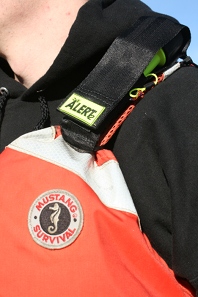AIS

Man Overboard – Are AIS SARTS the Best MOB Devices?
Man Overboard – Are AIS SARTS the Best MOB Devices? was an article written on…

Are App-Based Alarms Reliable for Man-Overboard Rescue?
Fall overboard (FOB) occurrences are much more common than we would like to believe. A…

ALERT2 Man-Overboard Alarm System™ versus AIS
There is a lot of hype about an AIS (Automatic Identification System) device as being…

The Value of ALERT2 Man-Overboard Alarm System
30% of all marine fatalities on United States Coastal Waters were from a fall overboard*…

Though AIS Is Required, It May Not Be the Best Solution for Your Safety
The ruling, “Vessel Requirements for Notices of Arrival and Departure and Automatic Identification System” becomes…
